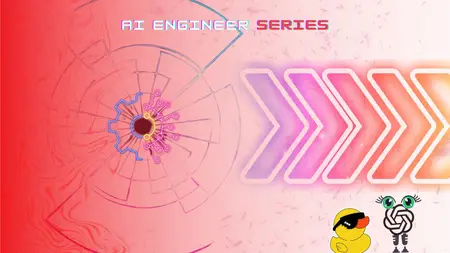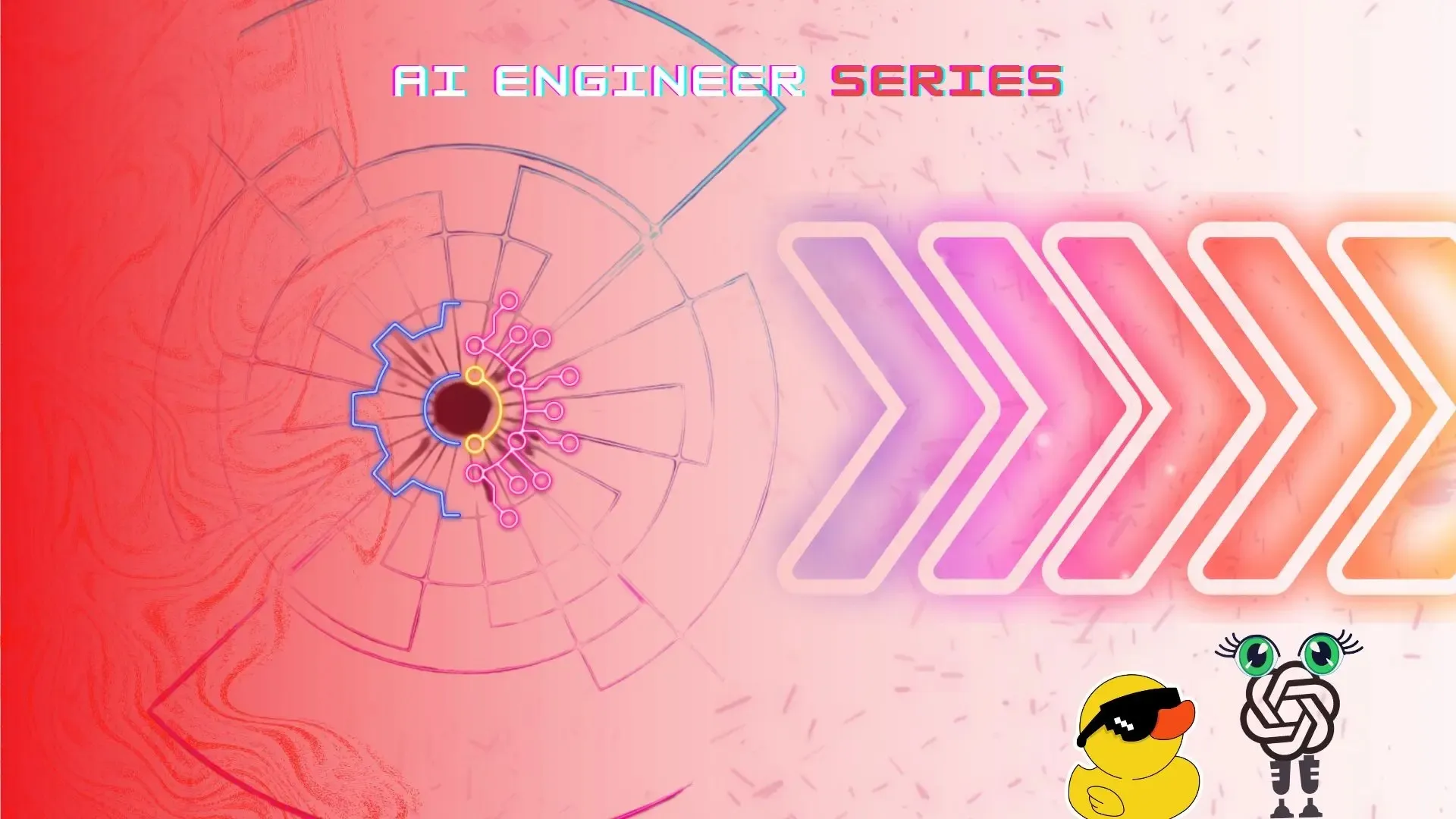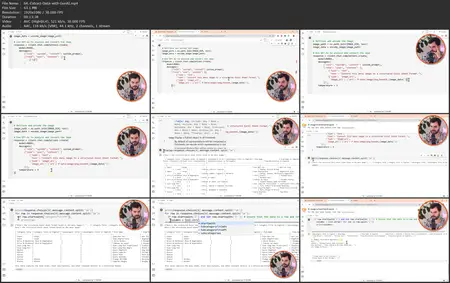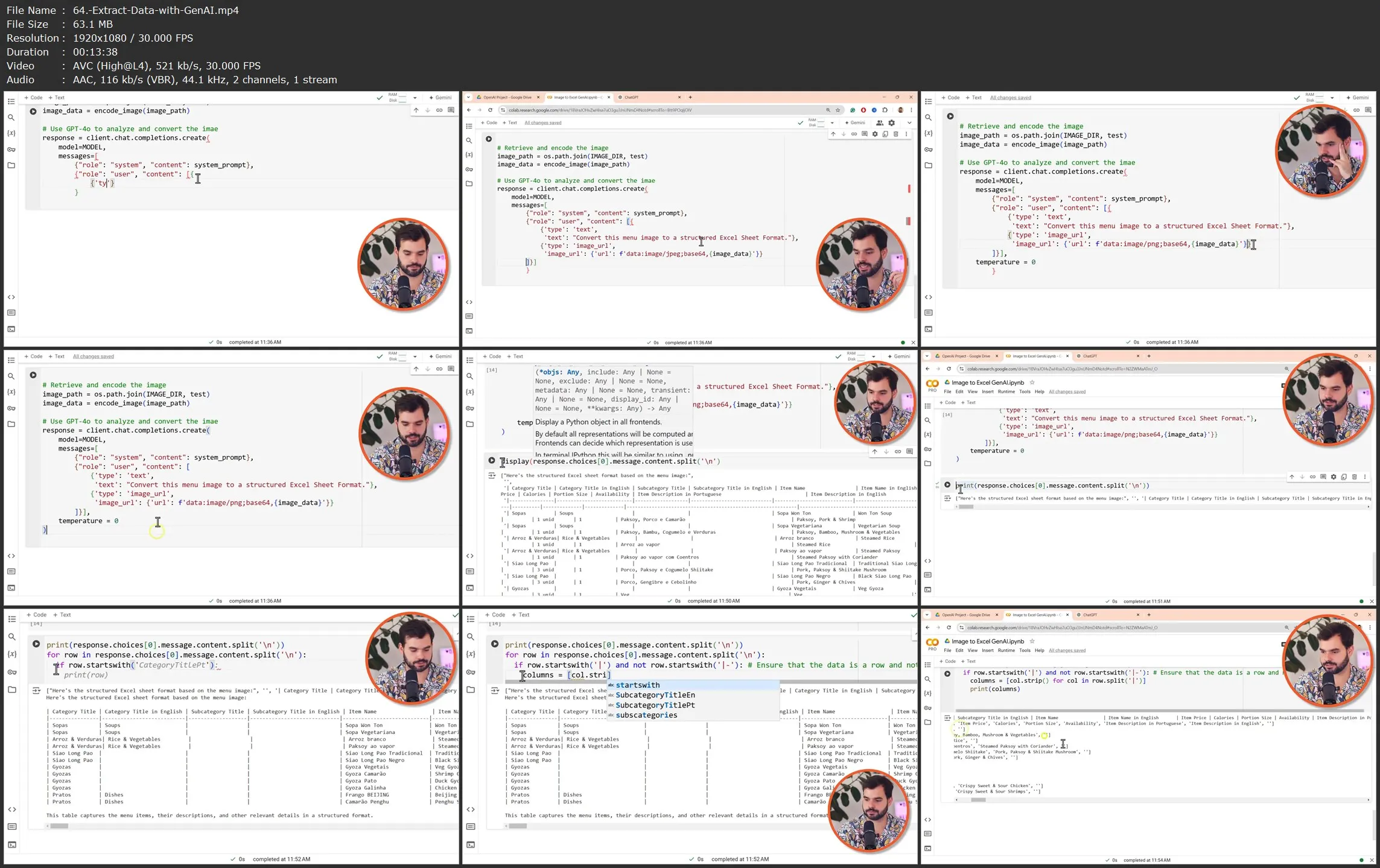AI Engineering Bootcamp: Retrieval Augmented Generation (RAG) for LLMs
.MP4, AVC, 1920x1080, 30 fps | English, AAC, 2 Ch | 17h 50m | 4.77 GB
Instructor: Diogo Resende
.MP4, AVC, 1920x1080, 30 fps | English, AAC, 2 Ch | 17h 50m | 4.77 GB
Instructor: Diogo Resende
Thrive in the AI era with this hands-on course that teaches you to build better AI applications using one of the most important AI techniques used in the real-world to supplement an AI model's knowledge with proprietary or new information: Retrieval Augmented Generation (RAG).
Learn to make smarter AI systems by combining LLMs with Retrieval-Augmented Generation (RAG). Build real-world projects using RAG architecture including chatbots, financial analysis tools, and much more!
What you'll learn
- Combine generative AI models with Retrieval Augmented Generation to build smarter AI systems
- Use OpenAI APIs for text generation and processing unstructured data
- Master FAISS for efficient similarity searches in massive datasets
- Apply prompt engineering techniques for optimal AI responses
- Build real-world AI projects like chatbots and financial analysis tools
- Explore advanced RAG concepts like multimodal and agentic RAG
What Is An AI Engineer?
The short version is that an AI Engineer works on the entire lifecycle of an AI application - that is, an application that utilizes AI at its core. An AI Engineer takes AI models, including Large Language Models, and customizes them to their needs.
That requires everything from building models using custom datasets, to training and tuning models, to deploying models and scaling them using cloud technologies.
The role is growing like wildfire, but it's still evolving and will no doubt continue evolving as the AI landscape changes.
What Is Retrieval Augmented Generation (RAG)?
Have you ever wondered why some AI systems can feel limited, giving answers that seem a bit generic or off-target? Well that's because they're limited to the knowledge in their training data.
And that's a lot of data. But it's not everything. It doesn't include private data, nor does it include recent data that has been created since the model was trained.
Retrieval-Augmented Generation, or RAG, addresses this by supplementing AI models with that private or new information.
Instead of relying only on what it was trained on, RAG retrieves up-to-date, relevant information from a database or document.
Here’s how it works: the system first finds the most relevant pieces of information for a given question (retrieval). Then, it uses a language model to generate a response based on that information (generation). That's why it's called retrieval-augmented generation!
The result is an AI that combines the best of both worlds: real-time access to external knowledge and the ability to express it clearly.
Let's do an example.
Picture this: You’re browsing a clothing store’s website, looking for a specific jacket in your size and favorite color, but you’re not sure if it’s in stock. Instead of clicking through endless filters, a chatbot powered by RAG can make this effortless.
When you ask, “Do you have the blue jacket in a medium size?” the RAG system retrieves real-time inventory data from the store’s database. It finds the exact details, like availability in nearby stores or estimated delivery dates - information that would not be in the AI model's training data. And then it uses that information to generate a useful response: “Yes, we have it in stock! You can pick it up at our downtown location or have it delivered by Friday.”
This kind of dynamic, accurate interaction makes shopping easier and faster, ensuring you get the answers you need without the hassle.
RAG is increasingly used in AI applications like chatbots, research tools, and data analysis systems, where accuracy and context are essential. It’s a practical way to make AI more reliable and useful in complex scenarios.
Why This RAG Course?
Well, because it's the best, most up-to-date, and practical AI Engineering Bootcamp course online that teaches you real-world RAG skills and that lets you get hands-on so that you can actually use your skills in the real-world.
But of course we're biased. So here's a breakdown of what's covered in this RAG Bootcamp course so that you can make up your own mind:
1. Basics of Retrieval Systems: This section lays the foundation for understanding how to search and retrieve information from large datasets. You will learn how to prepare text data for retrieval, explore different retrieval models (Boolean, vector space, probabilistic), and understand the concepts of indexing, querying, and ranking. The goal is to equip you with the skills to efficiently find relevant information within massive datasets.
2. Basics of Generation Models: Building on the retrieval concepts, this section introduces the principles of text generation using AI. You will learn about the transformer architecture, which has revolutionised natural language processing, and how attention mechanisms within transformers allow models to focus on the most relevant parts of the input. You will also gain an understanding of data preparation and training techniques for these models.
3. Introduction to RAG: This section introduces the core concepts of Retrieval-Augmented Generation, explaining how it combines the strengths of retrieval and generation models to create more accurate, contextually relevant, and comprehensive responses. You will learn about the basic RAG architecture and understand why it is becoming increasingly important in various AI applications.
4. Working With The OpenAI API: This section focuses on teaching you how to use OpenAI's API for accessing and utilizing their powerful AI models, particularly for text generation and image processing. You will learn about obtaining API keys, setting up your environment, crafting effective prompts, tuning parameters, and understanding the system prompt's influence on the AI's behaviour.
5. RAG with OpenAI Implementation: This section brings together everything you have learned so far to teach you how to build fully functional RAG systems using OpenAI models. You will integrate retrieval and generation components, explore advanced RAG concepts like multi-modal RAG, and use the OpenAI API to create intelligent systems capable of handling complex tasks.
6. Working with Unstructured Data: This section delves into the challenges and techniques for working with unstructured data, which constitutes a vast majority of real-world information. You will learn how to process and extract information from various formats like PDFs, Word documents, PowerPoint presentations, EPUBs, images, and Excel data. This section equips you with the tools to unlock the value hidden within unstructured data.
7. Multimodal RAG: Building on your understanding of RAG, this section introduces the concept of multi-modal RAG, which extends the capabilities of RAG to handle data from multiple modalities, such as text and images. You will learn how to build systems that can integrate different data types to generate richer and more contextually relevant responses.
8. Agentic RAG: This section introduces the concept of agentic RAG, focusing on building AI agents that can interact with users, handle tasks, and make decisions autonomously. The course covers agent state management, workflows, and integrating retrieval and generation into agentic systems. This section represents the cutting edge of RAG development and explores how AI agents can dynamically respond to user requests and complete complex tasks.





